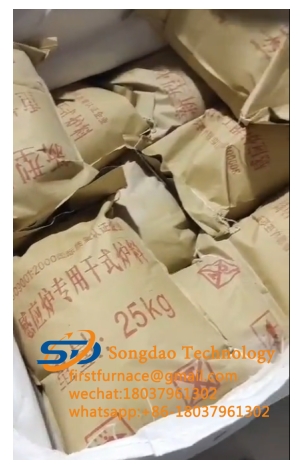- 16
- Mar
Characteristics and application fields of magnesia ramming material for induction furnace
Characteristics and application fields of magnesia ramming material for induction furnace
Magnesium ramming material is made of high-iron, high-calcium synthetic magnesia and fused magnesia as aggregates
Ramming material is a semi-dry, bulk refractory material formed by ramming. Usually particles and fine powders made of high-alumina materials are made according to a certain gradation and added with an appropriate amount of binding agent, and need to be rammed to obtain a compact structure during construction.
The induction furnace ramming material is mainly used in the direct contact with the melt, so the granular and powder materials are required to have high volume stability, compactness and corrosion resistance. At the same time, the induction furnace ramming material has good chemical stability and resistance Erosion, wear resistance, peeling resistance, heat shock resistance.
Magnesia ramming material is made of high-iron, high-calcium synthetic magnesia and fused magnesia as aggregates, and synthetic magnesia and fused magnesia are used as fine powders. The critical particle size is 5-6mm. Dicalcium acid) is used as a sintering aid without adding any binding agent, and it is made of multi-level ingredients. Through ramming construction, the density after construction is guaranteed, and it can be sintered into a solid whole at an appropriate temperature, and its life span is several times longer than the previous knotting and bricklaying methods. Under normal circumstances, the one-time life of dry ramming material can reach more than 300 furnaces, and it can be extended to 500-600 furnaces through hot repair, which not only reduces the number of furnace shutdowns, but also significantly reduces the consumption of refractory materials per ton of steel. The electric furnace magnesia ramming material is made of magnesia raw materials and additives. It has the characteristics of corrosion resistance, erosion resistance and convenient construction. It is used for filling the joints around the base bricks at the bottom of the ladle and around the base bricks at the bottom of the tundish.

